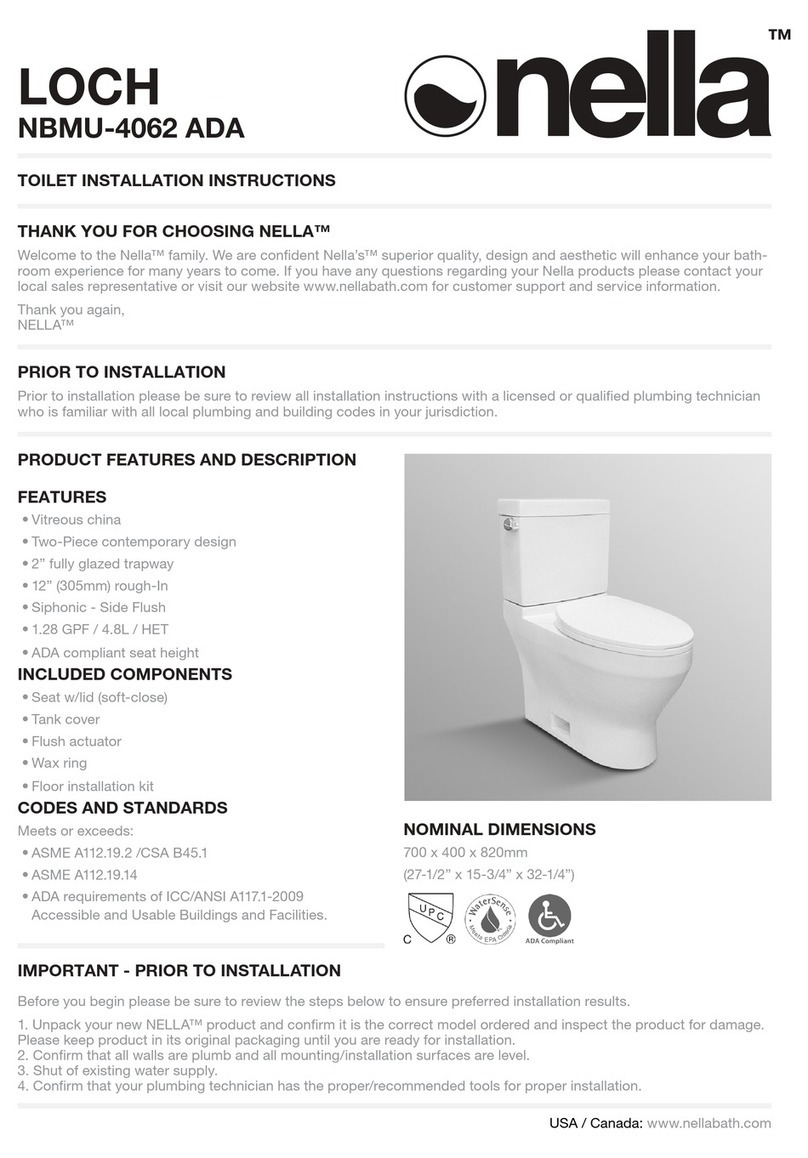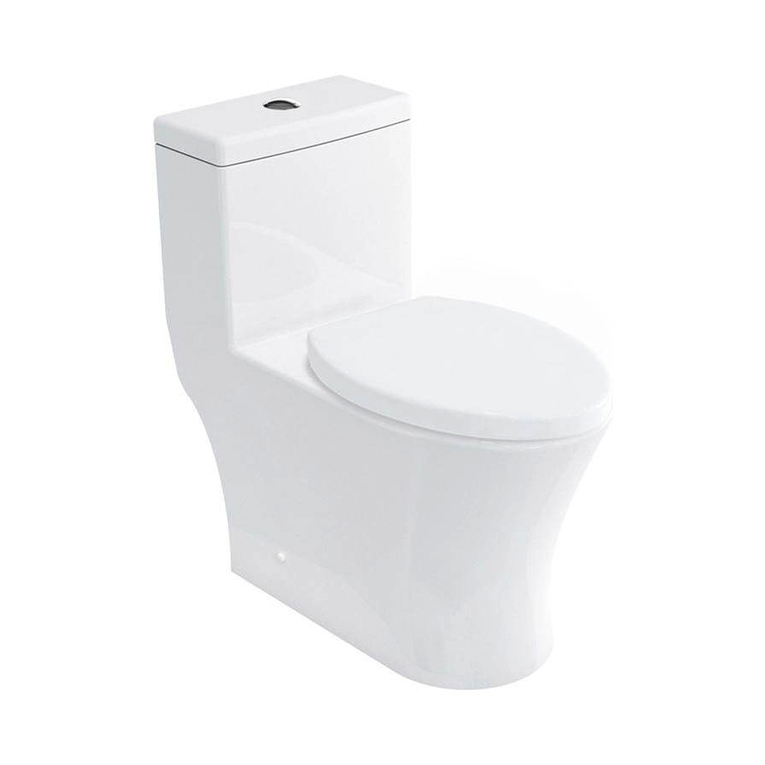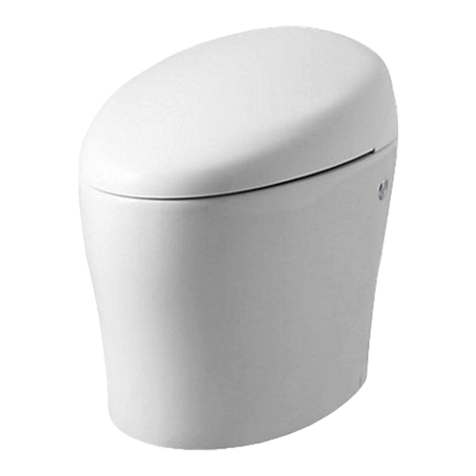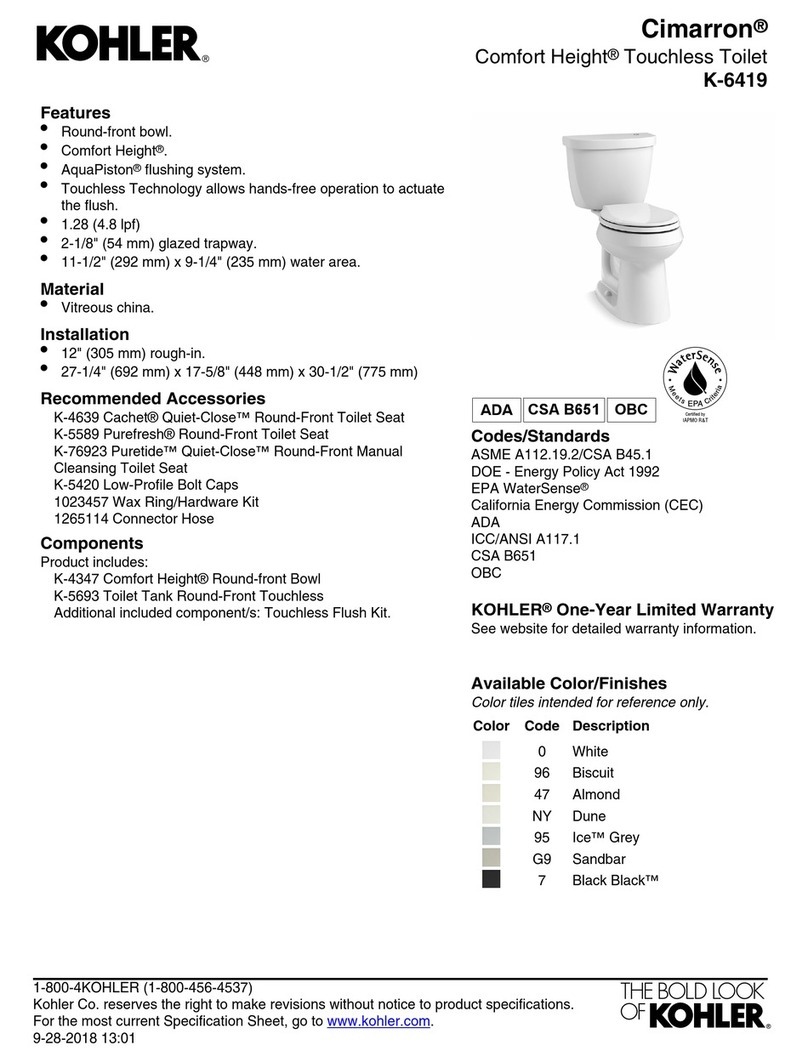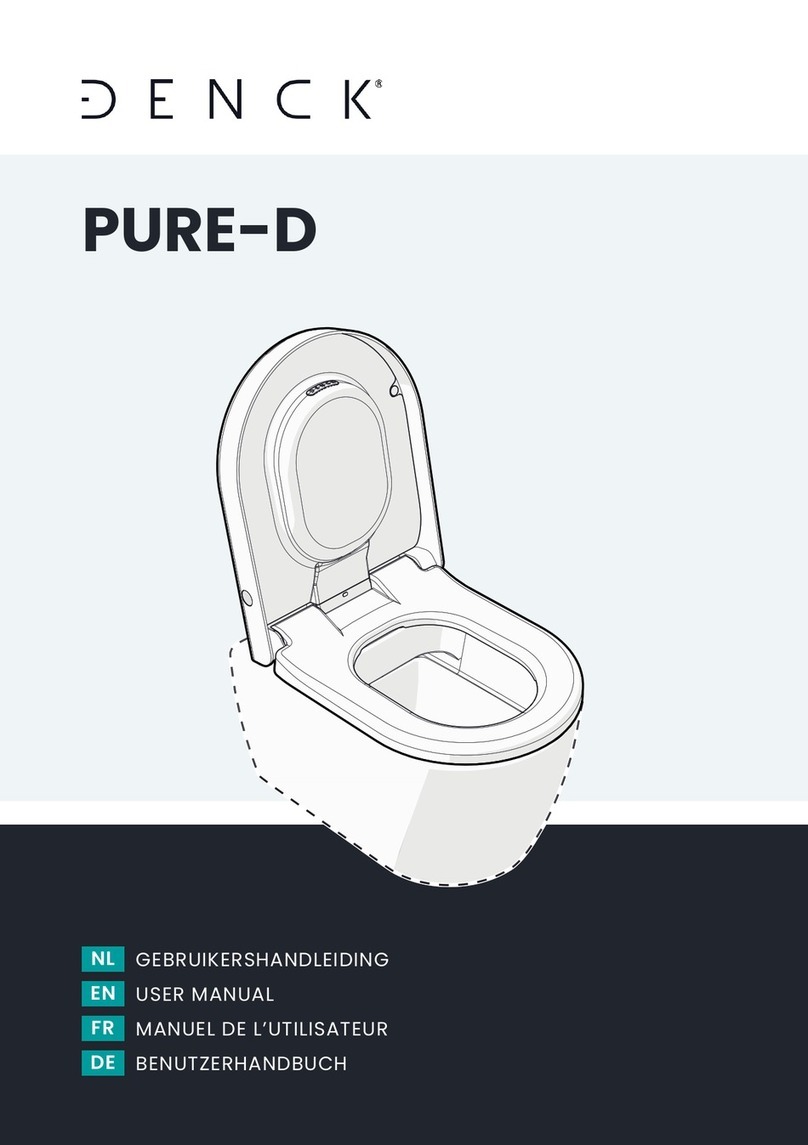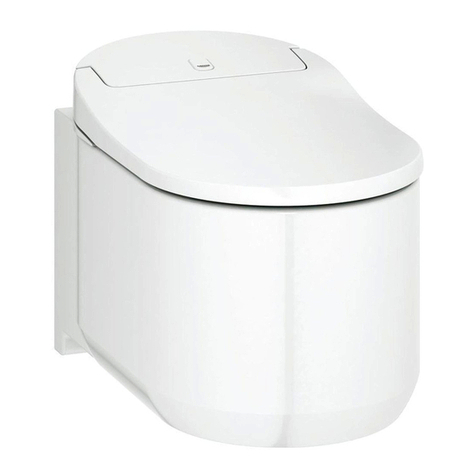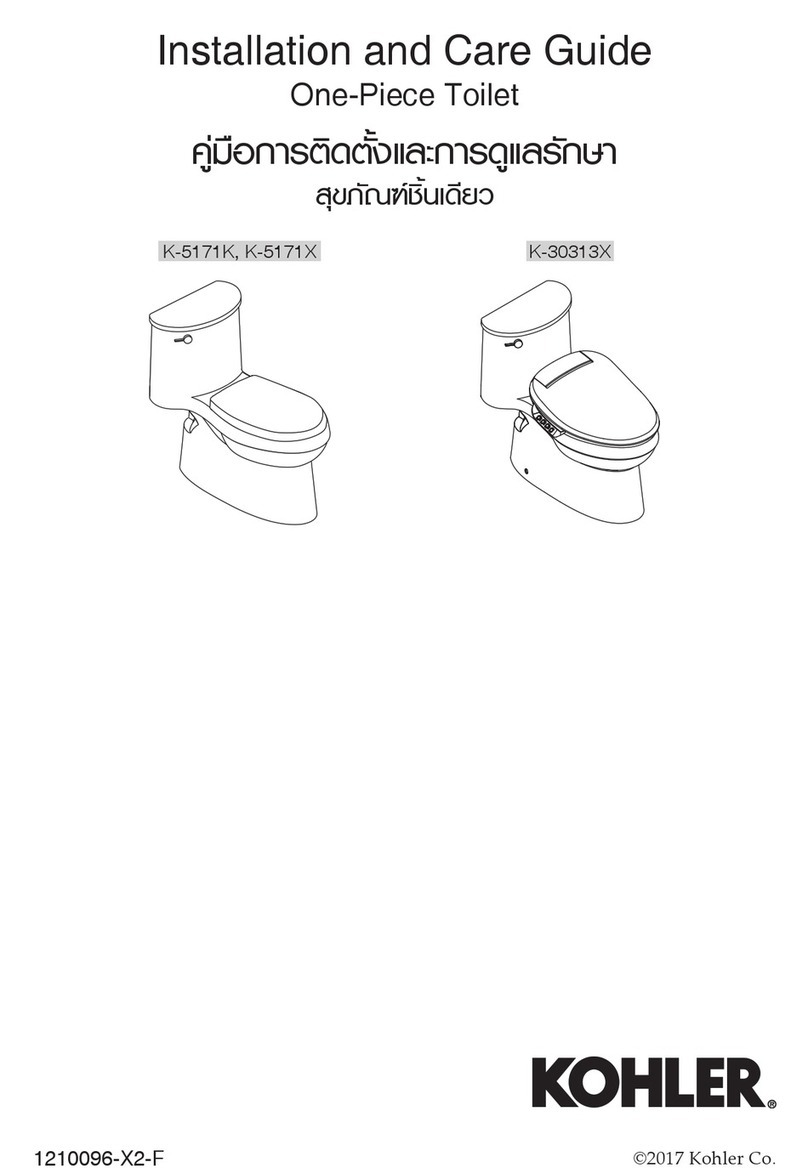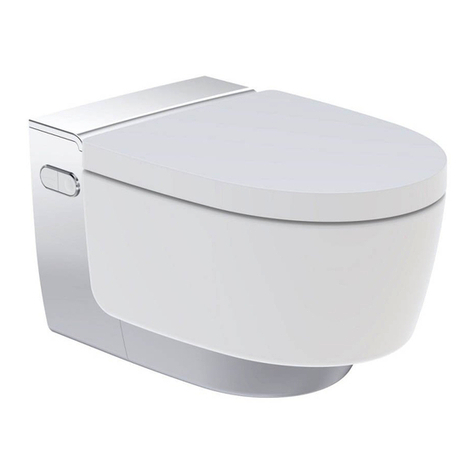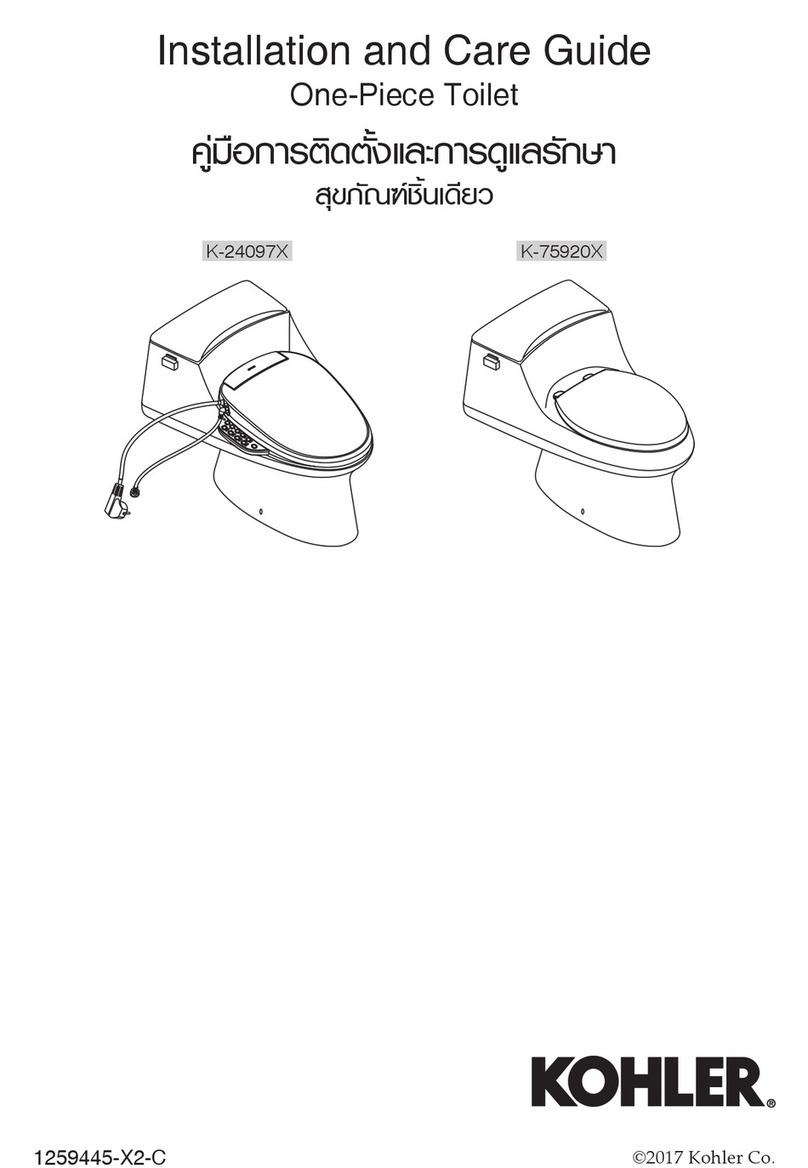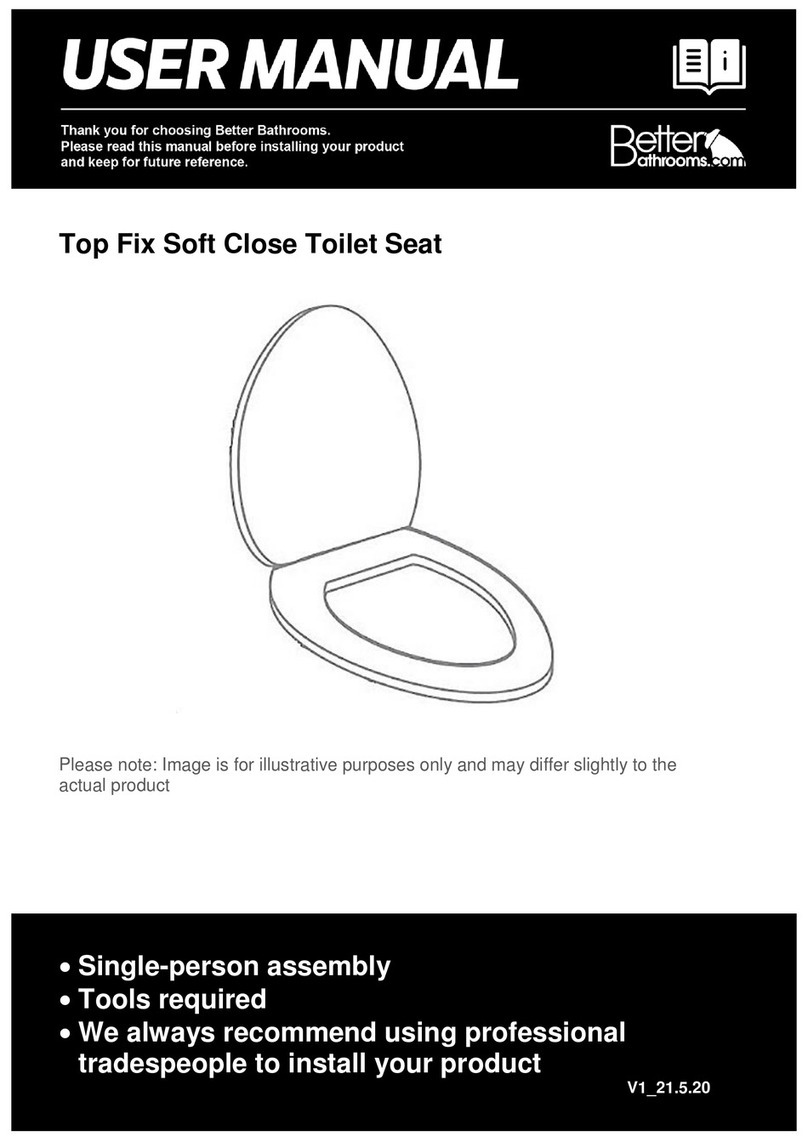Silent Venus SVP600 Maintenance and service guide

Silent Venus
SVP600
INSTALLATION & MAITENENCE
This product must be installed in strict accordance with local plumbing
codes. A licensed plumber should install product.
**Visit: www.thesilentvenus.com/our-system for instructional videos**

TABLE OF CONTENTS
Descriptive Diagram........................................................................................................................... 1
Cautionary Notice................................................................................................................................ 2
Introduction / General Information.............................................................................................. 3
Standard Operation............................................................................................................................ 4
Electrical Requirements..................................................................................................................... 5
Sanitary Inlets........................................................................................................................................ 6
Bathtubs................................................................................................................................................... 6
Shower Stalls.......................................................................................................................................... 6
Sewer Pipe Connection...................................................................................................................... 7
Proper Disposal..................................................................................................................................... 7
Pre-Installation Tips...................................................................................................................... 8-10
Placement Options............................................................................................................................. 10
Installation Diagrams.................................................................................................................... 11-12
Installation Instructions (Step by Step)................................................................................ 13-16
Activating the Unit............................................................................................................................... 16
Normal Operating Procedures....................................................................................................... 17
Troubleshooting Guide............................................................................................................. 18-20
Disassembly......................................................................................................................................... 20
Impeller Check.................................................................................................................................. 21
Cutter Blades..................................................................................................................................... 22
Reassembly of the Lid.................................................................................................................... 22
Warranty Information..................................................................................................................... 23
Terms and Conditions.................................................................................................................... 23
Returns and Servicing..................................................................................................................... 24
Warranty Requests........................................................................................................................... 24

DIAGRAM & SPECIFICATIONS
1. Air flow cap
2. Activated carbon
3. The sponge
4. Cover plate
5. Floating bucket
6. Rubber connecting pipe
7. Hose hoops
8. The water pipe
9. Check valve
10. Main housing
11. Main body foot
12. Self-tapping screw
13. Flat mat
14. Self-tapping screw
15. Filter
16. Circle clip
17. The blade
18. The blade fixed disk
19. Motor Component
20. Gasket
21. The impeller
22. Anti loose nut
23. Lead stroke dish
24. The guide disk foot
25. Out of the trachea
26. Clamp
27. A single briquette
28. Switch combination
29. Locking ring
30. Switch roof
31. Switch rubber bottom
32. Cable conductor
33. The cable retainer
34. Lead sheath
35. Implement the connection
Specifications
•Water Temp Minimum: 33.8o F
Important so that the unit does not
freeze.
•Water Temp Maximum: 90o F
•Motor Power: 400 Watts / 110 volts
o@ 60 Hz Fused / 3 Amps
•Max Vertical Discharge: 19 Feet
•Max Horizontal Discharge: 196 Feet
•Water Flow Rate: 26 Gallons / Minute
1

Using the unit for purposes and in situations apart from its intended function can lead
to damages and void your warranty. The conditions of misuse include but are not
restricted to:
•
Do not discharge any acids, alkaloids, solvents painting, paint strippers, food waste,
plastic bags, metal such as nails, hairpins, wood, building materials, kitty litter or
anything that could halt or damage or corrode the unit. Disregarding the above
might damage the macerating unit and shall void your warranty.
•
Do not hang bleach blocks or hydrochloride cleaners in the toilet tank. These
solutions have been shown to deteriorate the plastic and neoprene components of
the flush and fill valves, and may cause leaks.
•
In the event of a power loss do not use the toilet or any other sanitary fixture
connected to the macerating unit since it will not work until the power is restored.
•
Never immerse unit totally in water and do not let water enter the electrical cord
entrance opening.
•
The toilet works as a conventional flushing toilet and needs no maintenance other
than a once a month de-scaler fluid in normal use.
•
The macerating unit starts automatically once the toilet is flushed or the bath,
shower, hand basin, etc. discharge and cease operation once the contents have
been pumped away. Whenever the unit is not to be used for long periods of time
(vacation, power failure, maintenance, etc.) turn off the water supply to the tank
and flush the unit to evacuate the water.
•
No leakage into the bowl should ever be permitted from the tank.
•
In areas, which are prone to freezing, the total system must be properly winterized.
This includes the draining of all pipes, the toilet tank and bowl and the macerating
tank. The macerating system is simple to winterize. Pour a jug of plumbers’ anti-
freeze into the tank and flush the toilet. This will cause the macerating unit to
activate and all remaining water will be replaced by plumber’s anti-freeze. No parts
or labor are warranted when a breakdown occurs due to freezing.
•
Ensure that there are no faucets left open. Drops will eventually fill up the pump and
the resultant repeated start-stop of the motor may heat up to such an extent, that
the thermal overload switch may eventually operate and automatically stop the
motor, thus possibly causing a flood.
CAUTIONARY NOTICE
2

INTRODUCTION
The Silent Venus macerator is a residential pumping system for toilet and other
bathroom fixtures. The tank collects sewage from toilets, showers, and bathtubs via
the simple principle of gravity. A built-in pressure switch detects the incoming waste
and starts a pump combined with cutting blades. This pump works in tandem with
several cutting blades to convert the sewage into a fluid form which can be easily
pumped into drains via small-diameter pipes. A non-return check valve is fitted to
enable the unit to pump up more than 19 feet vertically without the waste flowing
back. Constructed in a reputed plant to meet the standard of modern appliances, this
macerator is equipped with the latest soundproofing technology. However, the
product can only be fully enjoyed and utilized to the maximum if the installation
instructions are followed to the letter.
GENERAL DESCRIPTION
The macerating unit is a very common pumping-and-discharge system for the
collection and disposal of waste in houses. However, its use is limited to certain areas
and appliances in the home. The macerating unit can only be used in the toilet and
bathroom for disposing human waste, dirty water and toilet paper. Its use in the
kitchen is prohibited as it is not designed for kitchen waste. It must not be connected
to kitchen fixtures such as dishwashers. On the other hand, sanitary fittings in the
toilet and bathroom can be connected to the unit. It is advisable to connect not more
than one water closet fixture to a macerating unit. Aside from this exception, a
singular unit can effectively accommodate multiple shower stalls, bathtubs, urinals
and sinks.
Generally, the sewage disposal system for residential buildings is made up of three
key components:
oThe toilet bowl
oThe toilet tank
oThe macerating unit
3

oThe container, which securely houses the operating mechanism
oA pressure chamber, which activates and deactivates the pump
oThe induction motor, which drives the cutting blade and the impeller
DISCHARGE REQUIREMENTS
- The Silent Venus macerating system must discharge into a minimum 3/4"
sanitary drainage pipe. It will pump up to 15 feet vertically, with a 1/4" per
foot gravity fall (minimum) constantly throughout the horizontal run to the
point of discharge. If you require a vertical lift, it should precede any
horizontal run and should commence as near as possible to the discharge
elbow. Once you have started the horizontal run, you cannot change
directions in an upward vertical manner.
- As the flush is operated or as the bath, shower and lavatory discharge, the
water and waste enter the unit and the water level begins to rise, triggering
the micro-switch in the pressure chamber. This in turn activates the motor.
The shredded waste is picked up by the impeller and discharged through a
3/4" or 1" outlet pipe to a sanitary sewer or soil stack.
-Safety note: For safety the macerating unit should never be activated with
the lid removed.
STANDARD OPERATION
In
order to function, The Silent Venus unit consists of three major parts:
For effective use, the macerating unit should be connected to a rear spigot outlet toilet
via the toilet’s outlet on the wall, and the waste collected should be discharged into a
drainage pipe The discharge pipe to be connected to the unit must have a diameter of
3/4 or 1 inch. It must be a ridged wall pipe. Flexible pipes or hose are not recommended
as they eventually get distorted after a period of time. The discharge pipe should be
made from 3/4-inch diameter materials such as copper (Type M), CPVC or PVC. It is
important that the pipe run uses radius bends and not 90 degree bends as blockages
can occur.
The unit is designed to pump waste vertically to a maximum height of 15 feet (4.57m)
with a minimum gravity flow of 1/4 inch per foot throughout the horizontal run to the
discharge point. It must be noted that the waste water can be changed to flow in a
vertical direction as long as the horizontal run has not been reached. Therefore, any
change in direction must be done before the horizontal run and at a point close to the
discharge elbow.
All other inlets must be gravity-fed into the unit. The standard outlet is intended for use
with a 1 1/4"connection. However, any connection can be used albeit with a reducer
coupling.
As the flush is operated or as the bath, shower and lavatory discharge, the water and
waste enter the unit and the water level begins to rise, triggering the micro-switch in
the pressure chamber. This in turn activates the motor. The shredded waste is picked
up by the impeller and discharged through a 3/4" or 1" outlet pipe to a sanitary sewer or
soil stack.
-minimum gravity flow of 1/4-inch per foot.
4

For users wanting to pump in both vertical and horizontal directions, the following
calculations should be used:
•
3 feet of a vertical lift is roughly equivalent to 30 feet of a horizontal run
•
A bend or change in direction would result in some losses which must be
deducted from the overall discharge performance.
•
The usual practice is to reduce discharge height by 3 feet for each 90° turn.
To achieve these bends or changes in directions, elbows or 90o bends must not be
used as it usually leads to blockages. Rather, radius or long turn bends should be
used and this can be achieved by connecting two 45o pieces back to back.
The maximum vertical discharge lift is 6m, while the maximum horizontal discharge
run is 100m.
f the installation process seems tricky and too complex to manage on your own, we
advise that you contact a plumbing contractor to do the job for you.
ELECTRIC REQUIREMENTS
The macerating unit uses a motor with a power consumption of 400 watts and as
such, requires a single-phase electrical supply rated 110 volts, 60Hz. Users must
ensure that this is installed in accordance with the current electrical regulations
and codes applicable in their areas of residence. A fused spur with a rating of 3
amps must be mounted outside the room for safety purposes.
If installed in the bathroom, the electrical socket or outlet must be positioned in a
straight line 40 inches away from a shower or bathtub. In addition, the outlet must
be protected by a ground fault circuit interrupter (GFCI) to avoid the danger of
electric shock. The unit itself is equipped with a grounding conductor and a
grounding type attachment plug to reduce the occurrence of such hazards.
However, it is imperative that the electrical outlet the unit is connected to be
properly grounded.
All electrical connections and installations must be done by a certified electrician.
5

SANITARY INLETS
In addition to the large inlet on the front of the unit that's designed for a toilet, the
macerating unit is equipped with two additional 2" inlets, one on either side of the
case. The macerating unit is connected to the drainpipes of sanitary fittings in the
toilet and bathroom via two inlets. These inlets are designed with an internal check
valve and located one on each side of the unit. If one of the inlets is not being used at
the moment, ensure you seal it off via the plugs provided in the product’s packaging.
These inlets, which incorporate an internal check valve, are used to connect the
drainpipe of other sanitary fixtures to the macerating unit.
Before connecting your sanitary fixture to the macerating unit via any of these inlets, a
suitable platform height must be established for the fixture. This height serves to
ensure that the minimum gravity flow required for the macerating unit to effectively
function can be achieved. The platform height is simply the distance between the P-
trap of the sanitary fixture and the macerating unit. Once this height is obtained, a
platform for the fixture can be built and its P-trap installed.
BATHTUB
Any regular bathtub can be used, as only the drainpipe connects to the macerating
unit. When installing a bathtub. a platform can be constructed from 2 X 8-inch
lumber, and the tub placed on the platform. This provides the required clearance for
the tub’s P-trap and aids the connection of its drainpipe to the macerating unit via
the sanitary inlet.
SHOWER STALL
For a regular shower, the same applies, as a 2 x 8-inch lumber platform can be
constructed for the shower stall. However, if the shower purchased is not the regular
type, a specially-raised base can be installed to achieve the same purpose.
Note: Platform height. The actual distance between the p-trap of the additional fixture
and the macerating unit determines the necessary clearance to install the p-trap and
elevation required to ensure a minimum gravity flow of 1/4-inch per foot.
Caution: The bottom of your shower stall must be at a height of at least 7 inches from
the ground before connecting the shower to the macerating unit.
6

SEWER PIPE CONNECTION
Using a 1 1/2-inch branch hub, install a standard wye fitting connecting the
discharge pipe to a sewer pipe.
If the discharge pipe is made of copper, purchase a brass male adapter
((MPT x Hub) 3/4" x 3/4" sweat) for the subsequent steps. If it is a CPVC pipe,
then a CPVC male adapter ((MPT x Hub) 3/4" x 3/4" sweat) is recommended.
If the wye fitting is made of copper, solder a length of pipe to the adapter
and allow it to cool. The cooling process can be accelerated if a wet rag is
wound around the plastic during soldering. For effective soldering and to
prevent the plastic material from deteriorating, a minimum distance of 6
inches must be maintained between the plastic and the piece being
soldered, and Teflon tape or 100% Teflon dope on male thread must be used.
Once the soldered piece has cooled, screw it into a female bushing
((spigot x FPT) 1 1/2" x 3/4"). Then glue the bushing into the 1 1/2" branch hub
of the wye fitting.
If the wye fitting is made of cast iron, PVC, CPVC or ABS, screw your male
adapter into a female bushing ((spigot x FPT) 1 1/2" x 3/4") and glue the
bushing into the 1 1/2" branch hub of the wye fitting.
Caution: Do not use ABS glue to join any CPVC material, as the glue would
fail to properly bond the materials.
PROPER DISPOSAL
The unit is designed to give many troubled free years of service, however, at
the end of its life be advised that the unit meets the current directive for
disposal and must be handled in accordance with these standards.
7

PRE-INSTALLATION TIPS
GRAVITY FALL
The unit accepts wastewater by gravity; it does not “vacuum”
in water. All inlet pipe work must have a positive gravity fall,
(1/4" per foot). All horizontal piping from the macerating unit
must also have a positive gravity fall to allow free drainage
when the pump stops.
VERTICAL INSTALLATION FIRST
If vertical lift is required, this must precede the horizontal pipe
run.
DIRECTLY VERTICAL
All vertical lifts should rise as directly above the unit as
possible, allowing only for the need to clear the toilet tank.
Any initial horizontal pipe run from the unit, prior to a vertical
lift should not exceed 12-18 inches.
PIPE SUPPORTS
All sanitary pipe work must be supported, in accordance with
the pipe manufacturer's recommendations. Avoid dipping or
trapping, which may cause the build up of residual solids and
sub- sequent blockage.
THREE FOOT MINIMUM
The macerating unit must be installed at least 3 feet from the
soil stack. This will allow the macerator to operate for an
adequate period of time to ensure efficient waste reduction.
SOIL STACK CONNECTION
All discharge pipe work must be connected to the soil stack
by an appropriate and approved connection. A “tee” or ”y”
fitting as shown is preferable.
8
Table of contents
Other Silent Venus Toilet manuals
Popular Toilet manuals by other brands
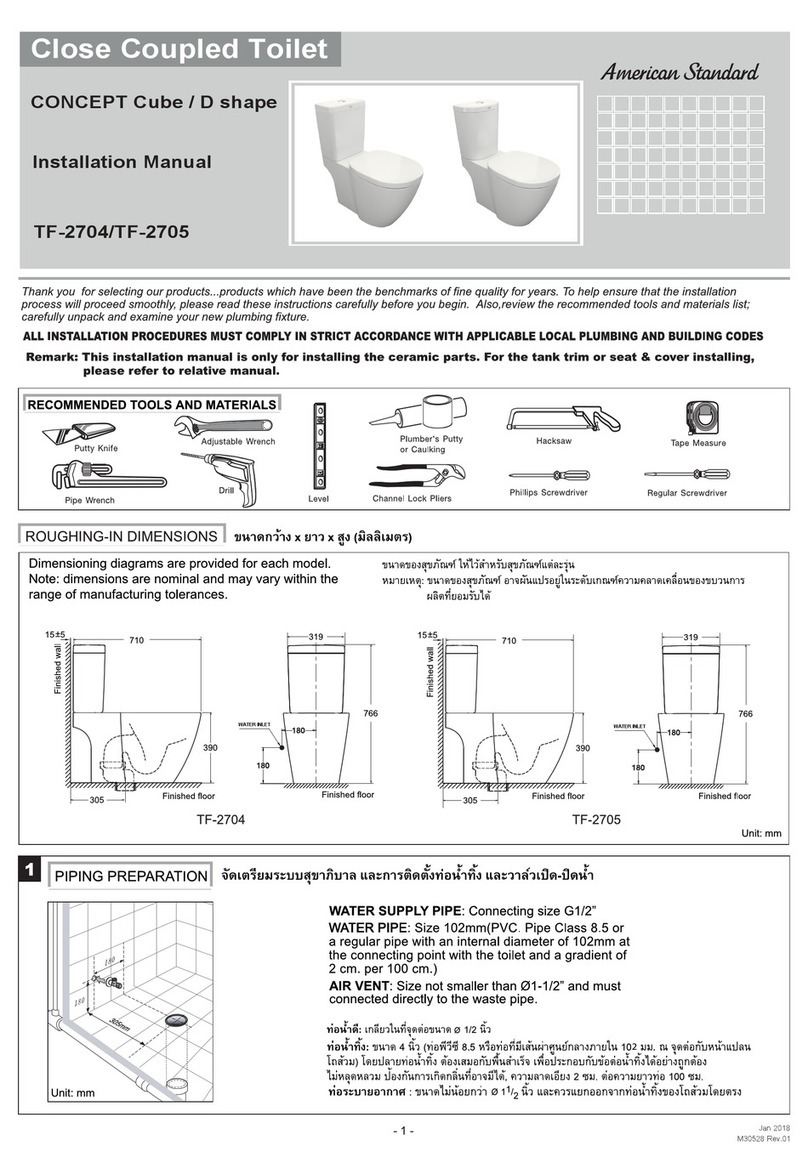
American Standard
American Standard CONCEPT Cube TF-2704 installation manual
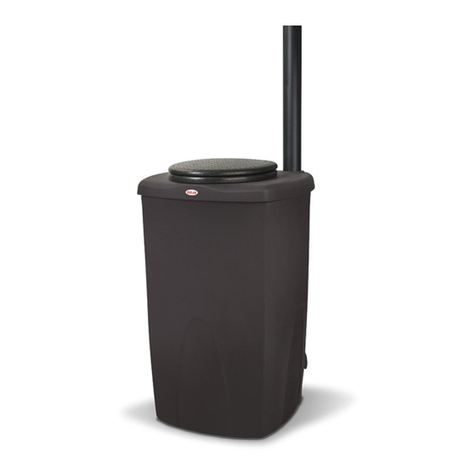
BIOLAN
BIOLAN ECO Instructions for installation, use and maintenance
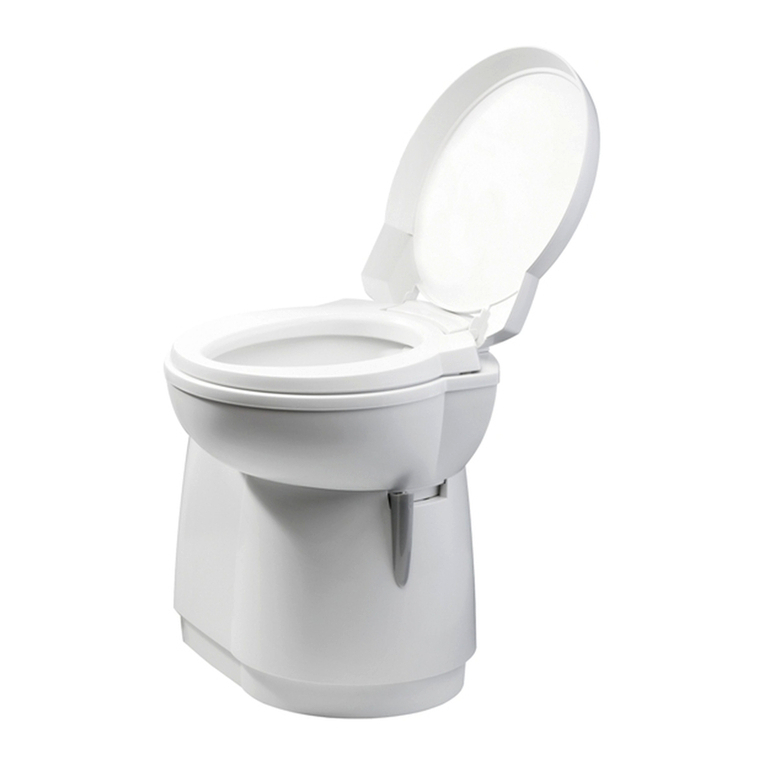
Thetford
Thetford C260 Series user manual
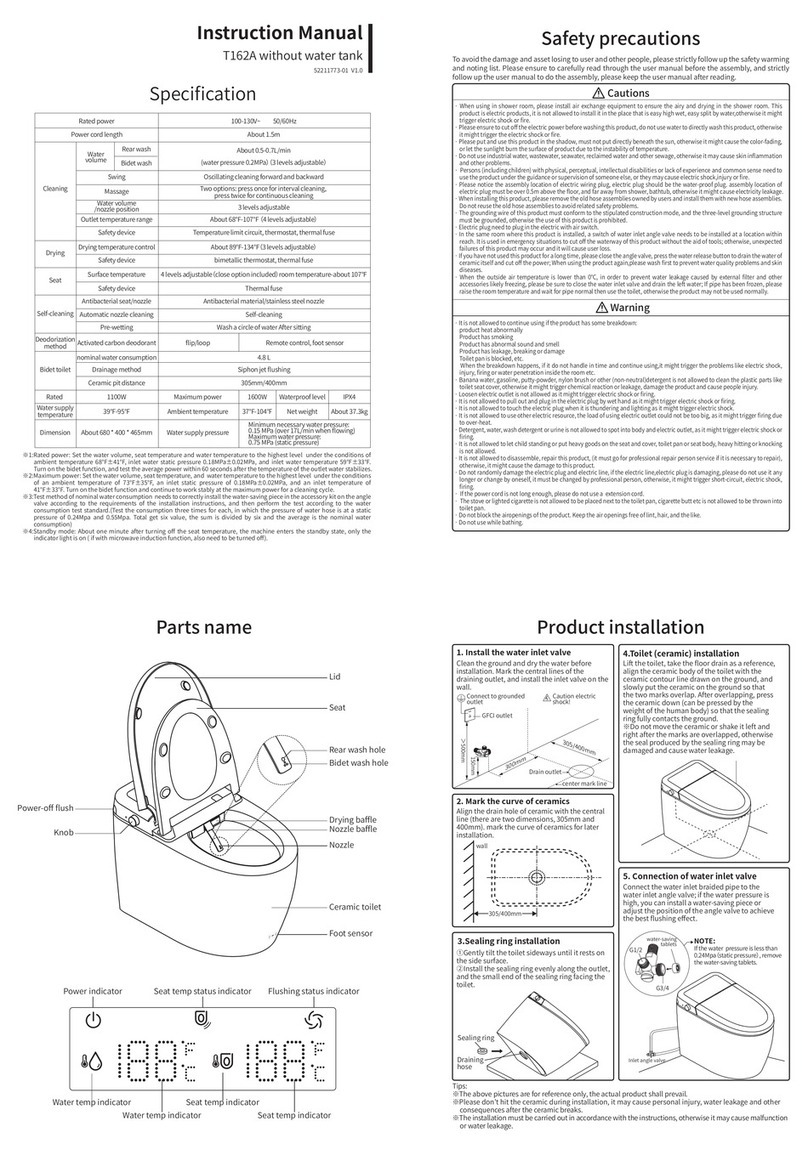
KELISS
KELISS T162A Series instruction manual
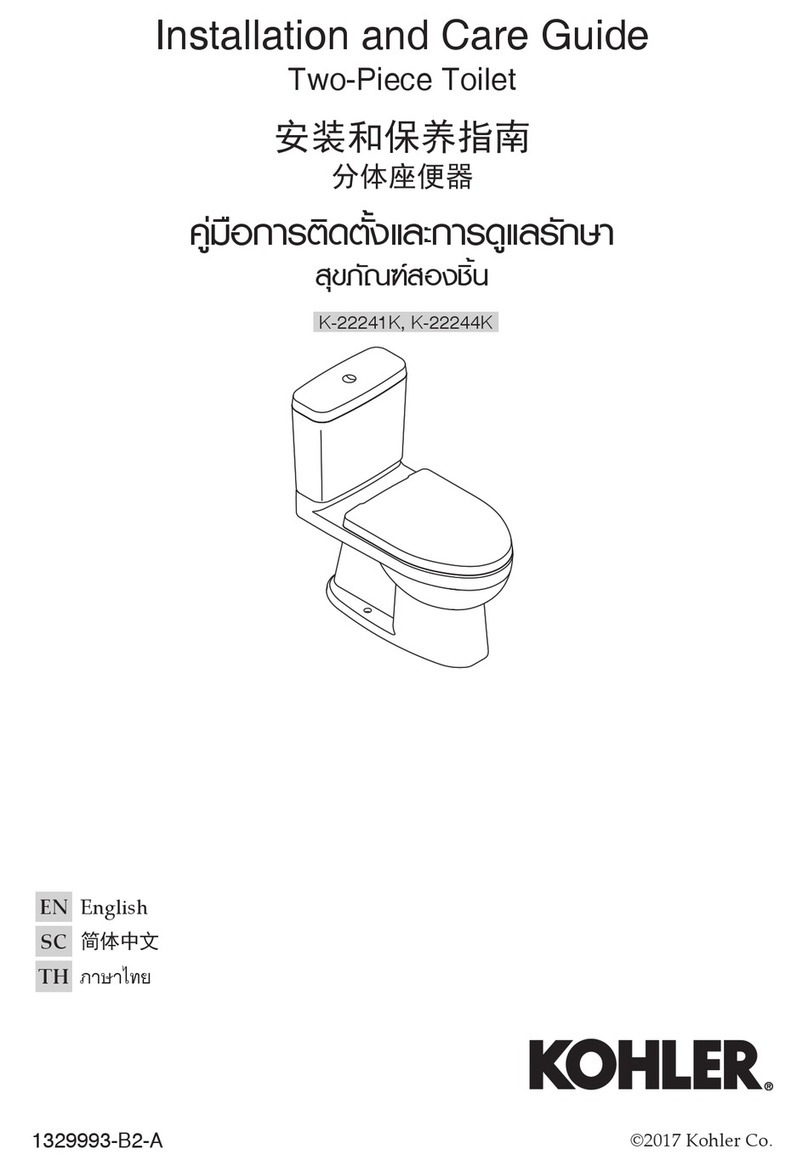
Kohler
Kohler K-22241K Installation and care guide

Kohler
Kohler ESCALE K-32771T-NS installation instructions

